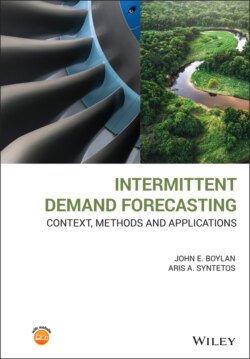Читать книгу Intermittent Demand Forecasting - John E. Boylan - Страница 28
1.4.3 Structure of the Book
ОглавлениеThis book starts by contextualising intermittent demand forecasting in the wider scholarship and practice of inventory management. We begin in Chapter 2 with a discussion of inventory management and some of its implications for forecasting. Then, in Chapter 3, we examine the service drivers of inventory performance. The focus shifts in Chapters 4 and 5 to the characterisation of intermittent demand patterns by demand distributions. This forms a natural foundation for the next two chapters, which focus on forecasting methods. Chapter 8 takes us back to inventory replenishment and the linkage between forecasting and inventory control. In the next chapter, we move on to the measurement of forecasting accuracy and inventory performance. Forecasting accuracy assessment is a notoriously difficult problem for intermittent series, and the chapter highlights the traps for the unwary and gives some pointers to good practice.
Although the main emphasis of this book is on forecasting, classification methods are also important in practical applications. In Chapter 10, we lay some of the groundwork for classification methods, discussed in Chapter 11, which have been designed specifically to address intermittence. In the next chapter, we turn our attention to obsolescence and forecasting methods that are particularly suited to this stage of the life cycle. Chapter 13 presents an alternative perspective on demand forecasting, concentrating on methods that do not assume any particular form of demand distribution. By contrast, Chapter 14 delves more deeply into methods that are based on demand distributions. The book closes with Chapter 15, which contains a discussion of software solutions for intermittent demand forecasting.
